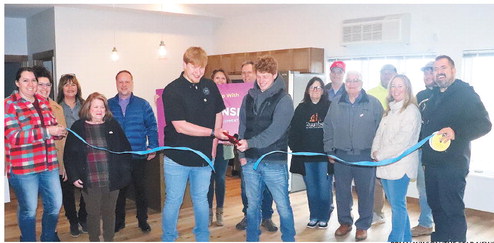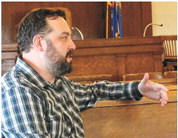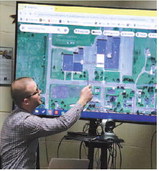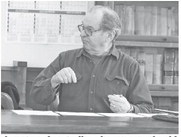Landfill is morethan simply just for waste


Those living in Marathon County may not think about where their garbage goes after it’s picked up curbside during the week, but one local official wants more people to see the impacts of all the waste.
Town officials from the western portion of the county gathered recently for a Wisconsin Towns Association meeting at the town center in Berlin, east of Athens. During Thursday’s evening meeting, the audience, which also included county and state elected officials, heard from Dave Hagenbucher, the interim director of the Marathon County Solid Waste Department.
Hagenbucher talked about the history of Marathon County’s sanitary landfill, which lies in the town of Ringle. The facility takes in about 200,000 tons of garbage per year, according to Hagenbucher, who estimated an average person creates around 1,700 pounds of garbage annually.
Even though the facility has an upcoming expansion set for 2026, according to Hagenbucher, one of the department’s focuses is on education and creating less waste needing to go into the landfill. Hagenbucher referenced a Wisconsin Department of Natural Resources waste audit that revealed 30 percent of material going into landfi lls is organic, such as food scraps that could be composted, and 21 percent is paper products that could be recycled.
According to Hagenbucher, last year the department began accepting yard materials to be disposed at a compost site at the facility. While it cannot accept food scraps yet, the compost produced is then used for a soil amendment for growing vegetation at the landfill complex. Along with the newly added compost option, the department focuses on educational opportunities, such as on-site tours and presentations to audiences elsewhere.
“We try to remove the veil of shame associated with waste management,” Hagenbucher said. “For so long, we’ve sort of hidden our landfills in rural areas where we didn’t have to think about it, but really, everybody should get out there. Everybody should see what’s going on to understand that the choices we make have an impact. The landfill is the impact.”
Hagenbucher said while the department does everything it can to manage the waste properly, like monitoring groundwater and air quality near the facility, he would argue that landfilling is not the best option. He believes a circular economy around garbage could be created, so resources are taken out before they end up in the landfill.
Currently, the department offers options for those looking to properly dispose of household hazardous refuse like cleaning agents, “universal wastes” such as light bulbs, oil and batteries, and other items like metal, tires and electronics. The focus on “resource recovery” for such items keeps them out of the landfill so they can be sent for recycling processing elsewhere, according to Hagenbucher.
Attendees during the meeting asked several questions of Hagenbucher, but one of the main topics that arose was contamination by PFAS, known as “forever chemicals” that have been in the news more and more recently. Hagenbucher said one of the ideas he’s heard for dealing with removing the chemicals from groundwater would be to capture PFAS at wastewater treatment plants and then, once they’re in highly concentrated amounts, put them into a landfill. Hagenbucher also answered a question about agricultural plastics that are now widely being used. He said currently the cheapest option, and one that’s less harmful than burning the plastics, is to landfill them. However, those plastics don’t really ever go away, according to Hagenbucher, who said they instead become “micro-plastics that are just harder to see.”
In other business: In addition to the presentation by Hagenbucher, attendees at the meeting received information about property tax assessment updates, county-wide land values and economic growth from officials with the Wausau office of the Department of Revenue Equalization Bureau. According to Tim Pfotenhauer, Marathon County saw its 10th year of growth since the 2012 recession, with 13 percent residential growth and 10.5 percent commercial growth in 2022.
Marilyn Bhend, clerk for the town of Johnson, brought up multiple issues the Wisconsin Towns Association is focusing on while giving the director’s report. The priorities she discussed included overhauling the state’s shared revenue formula, focusing on how to gain and retain fire and EMS first responders and responding to a forecasted shortage of town clerks. Bhend also implored officials to begin thinking about issues around levy limits and how it will affect town government. “How are we going to finance town government?” Bhend said. “Property tax on residential is not going to do it anymore. We’re on levy limits. Something needs to be done now, not years from now.”
Representatives from other areas of government were also in attendance at Thursday’s meeting, including an aide from Congressman Tom Tiffany’s office, State Senator Jesse James (R-Altoona) from District 23 and Representative Donna Rozar (RMarshfi eld) from District 69. Additionally, several Marathon County officials were present.





